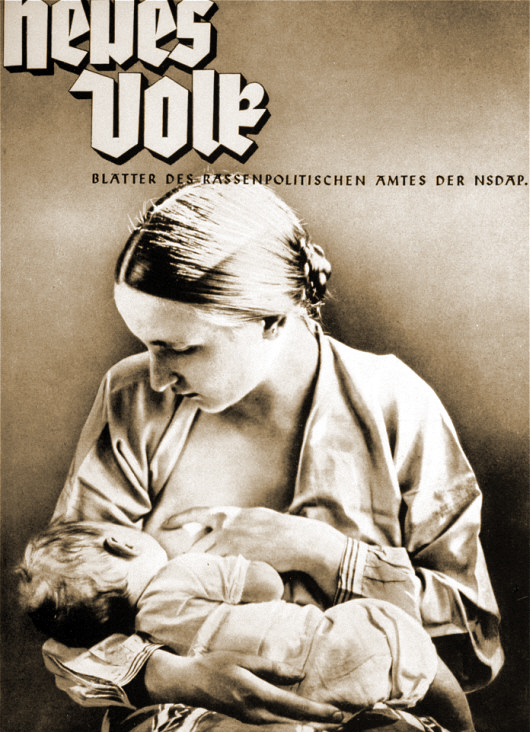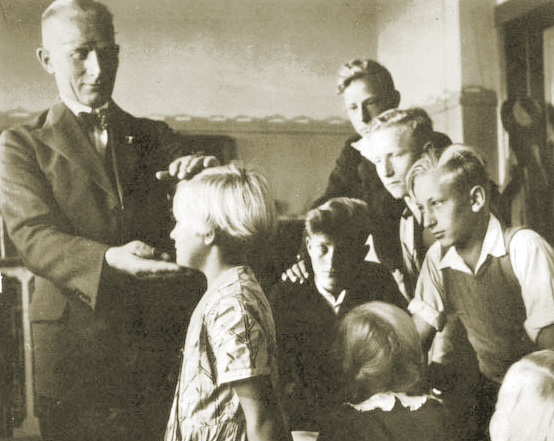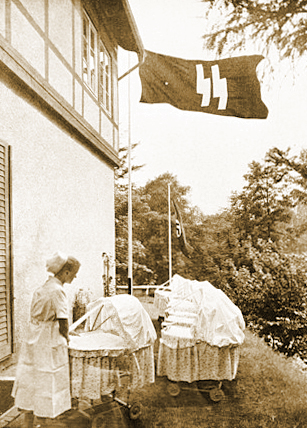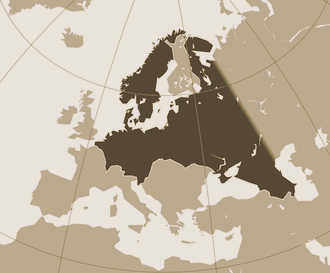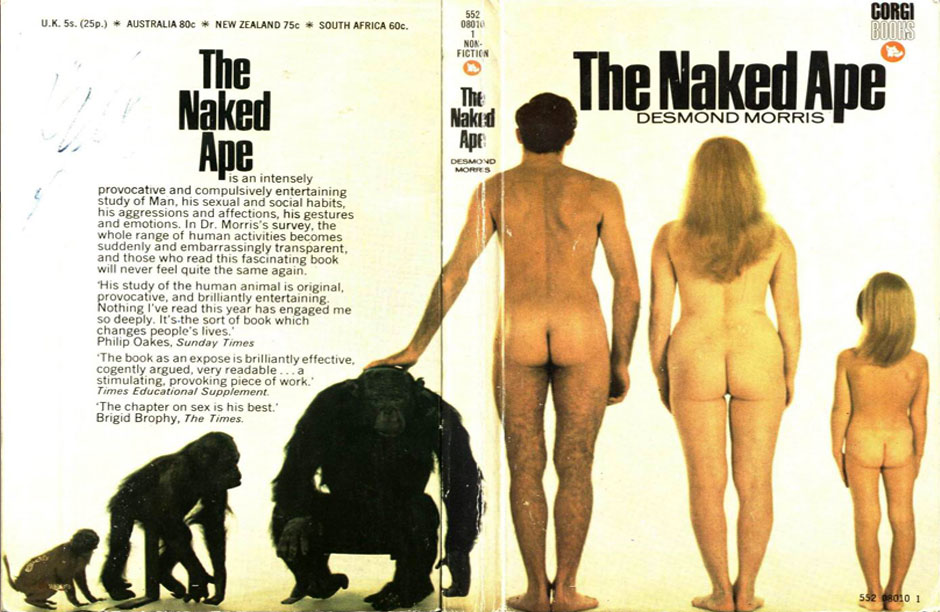Introduction
‘It is a reality that the historian, who follows the dictate of his conscience, is balancing on a knife’s edge, even though he reports no more than what he recognises—basing it on the construct of facts—as the truth. However, since the course of history and its explanations can be interpreted in various ways, so truth becomes a matter of power’.
—Prof. Franz W. Seidler
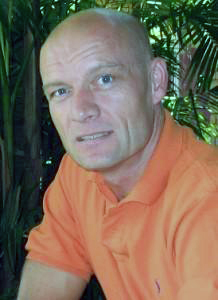 The following study deals with the crimes committed against Germans, the immeasurable economic and territorial damage inflicted upon Germany since 1945, and the resultant problems of reparations and compensation. Within this framework we shall closely examine the many-layered field of Allied war crimes and violations of human rights. These include the ethnic cleansing of Germans from their native homes and the Allies’ exhaustive plundering throughout Germany, as well as the abduction and exploitation of German civilians and prisoners of war as slave labourers. After having determined the extent of these crimes, we shall present the concept of a financial policy, burdensome with consequences, which up to now has been exclusively one-sided in its reparations and compensation practice, and we have to examine to what extent eventual German claims are justified from a viewpoint of ethics, international law and politics. Further, it needs to be established what should be expected from future sovereign German policies.
The following study deals with the crimes committed against Germans, the immeasurable economic and territorial damage inflicted upon Germany since 1945, and the resultant problems of reparations and compensation. Within this framework we shall closely examine the many-layered field of Allied war crimes and violations of human rights. These include the ethnic cleansing of Germans from their native homes and the Allies’ exhaustive plundering throughout Germany, as well as the abduction and exploitation of German civilians and prisoners of war as slave labourers. After having determined the extent of these crimes, we shall present the concept of a financial policy, burdensome with consequences, which up to now has been exclusively one-sided in its reparations and compensation practice, and we have to examine to what extent eventual German claims are justified from a viewpoint of ethics, international law and politics. Further, it needs to be established what should be expected from future sovereign German policies.
More than sixty years after the end of the war there have been accumulated innumerable documents and reports detailing the atrocities connected with ethnic cleansing in Sudetenland, Silesia and other Eastern German regions where Germans had lived for many centuries. On account of their magnitude and brutality, these expulsions rank among the most terrible atrocities of the twentieth century—indeed, of all time; and yet they have never been acknowledged as such by the opinion-making media in the Western democracies. In addition to the crimes connected with ethnic cleansing, the archives attest to countless thousands of other wartime crimes and atrocities, as do many other individual publications. These include abductions, imprisonment under horrific conditions, rape and pillage by Allied occupation troops, and the rampant theft of patents and artworks. The huge amount of documentary literature underscores the Germans’ keen and continuing interest in the history of the post-war period, as well as their determination to continue documenting these crimes in expectation of a future sovereign government that will make use of them. On the part of journalists and publishers, diligence and expectation have lasted for six decades. In view of such massive documentation of international crimes, it is all the more surprising that very few publications have dealt with Germany’s well-founded demands for recompense. There are hundreds of thousands of accounts expounding the crimes committed against Germans during flight, devastation, expulsion and the geopolitical and economic aftermath of the Second World War. Great efforts have been made to document in detail this financial and cultural devastation, although no publicist has yet dared to take the logical next step, as righteous as it is belated, of making demands against the guilty nations. Certainly no politician has ever dared bring up the subject. In Vienna as well as Berlin, it is clearly a taboo subject to raise demands for reparations for Germany and compensation to German people, as opposed to demanding reparations from Germany. It is high time the taboo was given an airing.
Some will ask, why include Vienna/Austria? The answer is, because Austria is an integral part of the German nation, and Austria shared the same horrific post-war experiences as the rest of the German Reich did. At a convention of socialist academics in Graz on 2 April 1964, the Austrian Vice-Chancellor Bruno Pittermann remarked: ‘As to the question of whether we are Germans or Austrians, the majority of us will answer just as we did in 1918, we are German Austrians, just as there are Slovenian, Croatian, Czech and Magyar Austrians, although these are small minorities’.
Pittermann was simply expressing the obvious. Of course the Deutsch-Osterreicher (German Austrians) do belong to the German nation! Their language is German and the Austrian republic is a German state, as many representatives of the Second Republic have acknowledged on numerous occasions. The Freiheitliche Partei Österreichs (Freedom Party of Austria) adopted this resolution as early as 1956, even making it a platform for its programme: ‘We support the sovereignty of Austria and we declare that we are members of the German national and cultural community. We advocate a joining together of all free peoples of Europe on the basis of complete equality and self-determination’.
Within the historical framework of more than a thousand years, Austria has fulfilled her function and destiny as a German land of culture. In this connection, one only has to remember the art of poetry and music. Grillparzer, Stifter and Mozart are outstanding representatives of German genius, just as Austrians identify with Schiller and Beethoven. To be German Austrian is by no means an expression of incompatibility such as the classic Goethean conflict of ‘Two souls contending in one breast’. As the Austrian poet Robert Hamerling wrote in the 1860s: ‘Germany is my fatherland! And Austria? Why, my motherland, of course. I love them both so dearly’. May the venerable Red-White-Red banner of Austria long wave as a symbol of this German land of Austria! This is the context in which we shall treat Austria and other German areas in the following study.
It is typical of the periodicals with the highest circulation, as well as conformist writers trapped in the spirit of our times, that they approach the theme of reparations for Germany with a pronounced shaking of the knees. Inevitably the introductions to their works contain cliche-ridden phrases and hackneyed sentences that would ‘relativise’, if not in fact express an excuse, so that, for example, the ‘monstrosity of the war unleashed by Germany’ should not be suppressed under any circumstances, or that, indeed, the subject of the book must on no account be misunderstood. Under no circumstances does one ever want to question the verdicts and decrees of Nuremberg. Furthermore, they affirm, there is never the intention of making a calculation in order to offset the crimes committed by the Germans on people of other nations—naturally, unique in history. Despite all the emphasis on German suffering found in works in the German language, never, ever must this be allowed to become one-sided and biased, etc.
One particularly repulsive kind of a concocted story even suggests that the guilt and blame associated with ethnic cleansing are exaggerated and belongs to the Germans anyway. For example, Hans-Ulrich Wehler shows infinite tolerance for these atrocities, considering them ‘a radical but completely understandable reaction against everything German’. He tells us that the reason they occurred is quite obvious: ‘As everywhere in Europe formerly occupied by the Germans, the actions and behaviour of the resistance movement and Allied troops were nothing more than a reaction to the inhumanity of the National Socialist regime’. In the following study, we are going to demonstrate that this simply does not correspond to the truth.
Attempts at ingratiating and falsifications of history occur all too frequently in our everyday literature. They either indicate the author’s ignorance or opportunism or else bear witness to his ideological and one-sided point of view. Both of these are incompatible with approaching the problem objectively with the intention of honestly answering questions and solving problems.
In view of the sharply curtailed freedom of expression in the Federal Republic of Germany (and increasingly in Austria as well), the debate on, and critical analysis of, an unpleasant subject matter, such as the one in this study undoubtedly is, can only be conducted—if at all—in the scientific field. Critics will of course object that I have not presented ‘the other side’, but honourable critics, from your mouths comes forth hypocrisy! The shelves of libraries and bookstores are filled with depictions of ‘the other side’; schools and universities teach ‘the other side’ exclusively, and radio and TV constantly lull the public to sleep with ‘the other side’. Our newspapers and ‘talk masters’ offer nothing except ‘the other side’ for their discussions, which are again filled exclusively with the arguments of ‘the other side’. Needless to say, the great majority of our politicians serve the interests of ‘the other side’.
Honourable critics, when have you ever given the German side a chance to be heard? Most German readers are completely surrounded and constantly brainwashed by ‘the other side’—socially, culturally, religiously and politically. High time now for German readers to be at last confronted with a truly different point of view. On account of overexposure to the ‘other side’, I have refrained from watering down my presentation with arguments to which the reader is exposed every day. Needless to say, I cannot avoid referring back to ‘the other side’, when it involves unmasking their underlying bias and duplicity.
Much of my sources consist of hitherto unpublished documents. These are primarily personal narratives and reports of factual events furnished by eyewitnesses and persons directly involved in the events. Included are reports from such diverse sources as adolescent girls as well as elderly women; from academics as well as peasants and artisans; from army officers as well as from members of the HJ (Hitler Youth) and their female counterpart, the BDM (League of German Girls); from Democrats as well as National Socialists. Because of varied educational backgrounds and individual points of view, not all the reports could be printed in an unedited form. Wherever grammatical, syntactical or orthographical corrections were necessary, I have carried them out to the best of my knowledge and ability. In order to preserve the authenticity of the sources, I have changed nothing regarding the style of writing or the statements as such. Of course, the eye-witness testimonies and historical documents presented here cannot deal with all aspects and events of the war and post-war period. In part, we are obliged to content ourselves with highlights that serve to illuminate the main points. Here the solution of pars pro toto (a part for the whole) must suffice. The testimonies and reports are in fact comprehensive and detailed enough to depict the matter in its totality, and, as facts, they are strong enough to provide the basis on which to build the argument for demands for reparations for Germany.
It is of course entirely proper to compensate those who actually suffered under the German occupation. This ethical principle, however, has been grossly abused, converted into a gigantic fraudulent business or ‘industry’, as Prof. Norman Finkelstein calls it in his book The Holocaust Industry. Such corruption is made inevitable by the excessive greed of ever-new claimants manifesting themselves, as well as the shameless and cowardly moral stance of politicians in Vienna and Berlin. It makes a mockery of legitimate demands. Claims against Germany, the most detrimentally affected country since 1945, are simply endless; in fact, they still continue to grow. This is why it is necessary for our study to consider the latest German and Austrian payments to third-party states or, rather, interest groups very critically.
The psychiatrist and psychoanalyst William G. Niederland, who emigrated from Germany in 1934, specialised in treating the lifelong traumas of persons who experience overwhelming sorrow. He particularly distinguished himself as a counsellor and for giving spiritual welfare to persons who had suffered persecution during the Third Reich. During the 1980s he became convinced that ‘National Socialism may have ended 40 years ago, but the consequences for survivors have still not been overcome’. It was he who had already introduced the concept of ‘Survivor Syndrome’ as early as 1964. According to Niederland’s findings, the principal symptoms of this syndrome are:
- ‘An overpowering depression, characterised by sulky behaviour, the tendency to withdraw, and inexpressible sadness interrupted occasionally by short-lived outbreaks of anger. This behaviour is then accompanied by apathy and lack of initiative, feelings of insecurity, mistrust and helplessness.
- A heavy, persistent, usually unconscious guilt complex that arises from inner survival guilt, and consciously or unconsciously centres around the question of: Why did I survive the calamity that killed all my loved ones—parents, children, siblings, friends, spouse?
- A state of anxiety and irritation giving rise to sleeplessness, nightmares, inner stress and tension.
- The personality changes and psychological disorders, since they persist as permanent disorders, will eventually also lead to physical symptoms in most patients. These occur as stomach, heart, colon, vascular and other illnesses (blood pressure, premature ageing, hardening of the arteries, etc.). Headache, painful joints, trembling of hands, and rheumatic complaints are the rule rather than the exception among these persons.
If these psychological observations are appropriate, they cannot be restricted to just one particular people or national group. The case of their veracity established, they must be universally applicable. Therefore, we find these ‘tormented souls’ also among German people. In addition to the millions of expellees, millions of German slave labourers and prisoners of war suffered incredible abuse. The suffering of the first-mentioned group was increased, because they, in contrast to other Germans, did not only lose their belongings and properties, but also their native homeland (Heimat). In nearly all of the publications of the expellees, it is this loss that is the central theme. The fundamental significance of Heimat is very well described in an article on the destruction and occupation of Danzig: ‘What did they [the outsiders, remark of the author, C.N.] care about Danzig? What did this city mean to them, since it was not their Heimat? For us Danzig was everything, we were bound to it with every fibre of our being. To us it was as if our very lives were being extinguished as we watched it sink away in a smouldering sea of flames, and we were helpless to do anything to rescue it’.
Heimat is much more than just an abstract concept. Let us state more precisely what the loss of Heimat actually means, and what far-reaching consequences arise from it. The journalist Margarethe Dörr has described it in vivid terms: ‘The loss of Heimat’—what a multitude of emotions and experiences are included in these words! They mean separation from our home and the familiar surroundings in which we spent our childhood, youth, early married years; for some, our entire life. It also means the loss of the greatest part, if not all, of what one has possessed—from necessities of life to the personal items dearest to one’s heart. This is true whether it was ‘just’ a toy, a book, musical instruments, or some art objects that one had inherited. Lost were familiar landscape and surroundings, and—even more important—the familiar social environment, the people we trusted and understood and knew intimately. Lost were all those values, material and immaterial, that we can never quite replace and will always look back on with longing and certainly with nostalgia. Those who consider resettlement and population transfers to be nothing more than a means of national Flurbereinigung, i.e. an ethnic cleansing of a territory, and who then regard this to be reasonable on the assumption that, after all, transferred populations will adjust to new surroundings within a generation or so, are denying, for at least a generation, the basic human rights of all these expellees, along with a significant part of their identity. This is true even if the ethnic cleansing is carried out in a relatively “humane” manner’.
How much more did this hold true for the circumstances of the Germans who were not expelled under humane but rather the most inhumane conditions, accompanied by the most savage violations of human rights imaginable! When hundreds of thousands of Germans today still speak of losing their homeland, they are referring to more than just the brutal act of ethnic cleansing. They are referring to the total process of alienation from the lives they had been leading for as far back as they could remember. In the words of expellee and former slave labourer Ida Winter: ‘The material loss of being driven from our homes was very great, but the damage to heart and soul was greater still’.
Quite aside from the right to their homeland, which is still being denied to the expellees, millions of Germans remain without any recompense for the horrors of imprisonment, torture, forced labour; and they have not been compensated for the output of their work, nor the loss of material and intellectual property. In the end, the souls of these people were murdered also: It is not possible to put into words what happens in the souls of a people without any rights, treated worse than any animal—thrashed, flogged, jeered at.
In the Ost-Dokumentation (documentation pertaining to the Eastern part) of the Federal Archives, one of the affected people rightly expressed it thus: ‘One can quote all the facts and figures—but the pain and agony of caged children, of deported and raped women and girls, of the men and boys beaten until crippled, of the torn-apart families, of anxious parents, of dispossessed human beings expelled from the soil of their homeland—this nobody can describe. We can outline the broader perspective, but the individual misery and despair simply cannot be described. Every house, every farm, every family was a tragedy in itself’.
Countless people, particularly among the expellees and the deported Germans used as slave labourers, were unable to withstand the terrible physical and psychological stress. They simply collapsed and died along the roads or in barns and cellars, abandoned and ignored by others. Tens of thousands chose to escape by taking their own lives. German fathers killed all their family and then themselves. German mothers killed their children, then ended their own lives. Thousands of Germans threw themselves into lakes, rivers and wells, drowned their offspring and then themselves, or else hanged themselves from trees or barn rafters, while others slit their veins and slowly bled to death. Such cases were by no means isolated incidents! Veritable epidemics of suicide were reported in many places. Over 2,000 Germans had killed themselves by mid-August 1945 in Karlsbad alone. In towns of 30,000 to 35,000 inhabitants, such as Teplitz-Schonau, no fewer than 6,000 would commit suicide! The floodgates of dams in the Riesengebirge had to be repeatedly opened in order to remove corpses that were clogging the drainage outlets.
In contrast to the subject of ‘foreign labour in the Third Reich’, dishonestly generalised as ‘NS-forced labour’, there have been very few investigations done about German prisoners of war and deported civilians doing forced labour in foreign lands. Those in the corridors of power do not get involved in the subject of forced labour performed by Germans and their exploitation as forced labourers. The official interest is exclusively with foreign workers employed in Germany during the Third Reich, even though most of these had come to Germany voluntarily and were paid substantial wages. Ulrich Herbert, a German historian concerned with contemporary history, displays the fashionable spirit of the times in his typically obligatory self-accusation: ‘The National Socialist use of foreign labour between 1939 and 1945 represents the biggest case in the history of foreign workers being used as forced labour on a massive scale since the end of slavery in the 19th century. In the late summer of 1944 there were, within the territory of the ‘Greater German Reich’, 7.6 million foreign civilian workers and prisoners of war listed officially as employed; most of these had been brought to the Reich to work against their will’. Leaving aside that in the Soviet slave state between 1939 and 1956 the figures for forced labour, inclusive of German prisoners of war and deported civilians, remained consistently in the two-digit millions, the fact alone that Herbert disputes the degree of misery and suffering of the German forced labourers and denies it with his false assertions, underlines more the political than the scientific standpoint of this University Professor of History. Fortunately, we now have adequate documentation to unmask such allegations. The exclusively one-sided campaigns to compensate real or alleged victims have long since reached considerable dimensions. A whole industry now thrives on it; enough reason to examine this area in more detail in a separate chapter.
Already during the war it was alleged, and continues to be alleged to this day in many German and Austrian history books, that science and research were suppressed for political reasons under National Socialism, and that scientists and intellectuals were sacrificed to militarism and the political system. However, the multitude of outstanding scientists and researchers abducted by the victors for intellectual exploitation makes this claim untenable. In view of the Third Reich’s leading position in most areas of science and technology, it is pointless to assert, with monotonous regularity, that it was the intellectual elite that abandoned Germany in 1933. It is of course undeniable that many intellectuals, for example physicists and writers, chose to emigrate when the National Socialists came to power, and it is also true that many of these had distinguished careers abroad. However, the Allies’ plundering rampage of the intellectual sphere of the Third Reich proves that German research of the day was distinguished by a well nigh inexhaustible vitality and productivity, and that the overwhelming majority of the German intelligentsia had remained in the Reich.
In National Socialist Germany, science and research experienced an output of inventions and accomplishments such as the world had never seen before, and the Allies were well aware of this. They engaged in a mad scramble to commandeer this immense intellectual treasure for their own uses. Projects such as Overcast, Paperclip and Ossavakim attest to this. Such massive campaigns of plunder and abduction represent an immeasurable loss—not just for Germany but for all of Europe, as this enabled, most especially the Americans and Soviets, to procure an inconceivable yield and gain.
Despite the ceasefire, the Allies continued to wage unabated war against Germany, albeit no longer with machine-guns and bombs. This war now took the form of an intellectual subversion, as the humanities scholar Herbert Grabert once called it. This cultural and intellectual warfare was also, and especially, carried over into German science, and consequently it represents a major factor of the victors’ post-war crimes.
Up to the end of the war, Germany was the uncontested world leader in many fields of science and technology, as is attested by the dominance of German scientists among recipients of Nobel prizes. Onwards from 1945, a fundamental change took place. At the end of the Second World War, the victors made short work of German science: the leading figures from many research fields would be ‘voluntarily’ abducted, German patents worth many billions of dollars were plundered, and the German system of training and education was brought to a standstill for years and decades by a radical programme of de-Nazification, as well as a Marxist cliche-ridden re-education in the style of the ‘Frankfurt School’ imported from the USA. The decline of German science and research and, consequently, Germany’s increasing social and cultural impoverishment, were not at all an unalterable natural occurrence, but rather a well-aimed and deliberate intervention on the part of the victorious powers.
In popular writings and official pronouncements it is stated repeatedly that—from a German perspective—one must not attempt to ‘balance the books’. This is not the intention of this work in hand; it is, however, intended to attempt some calculation or ‘inventory taking’. Where is it written that Germans are not allowed to compare injustices committed with the put-upon guilt, juxtapose them and then draw one’s own conclusions? Maybe, because one might quickly realize that, on the one hand, Germany has long since paid her debt and that, on the other hand, the crimes perpetrated on the German people are of such magnitude that anything else is beyond the pale of rational enquiry?
Even the publicist Gunnar Heinsohn, who certainly cannot be suspected of wanting revenge, speaks of the driving-out of the Germans from their hereditary homeland as ‘the greatest crime of expulsion in history’. This is undoubtedly true, but it only constitutes one part, when considered in the aggregate of all the crimes committed against the German nation and of the loss suffered by Germany! Abduction, forced labour, organised plundering, misappropriation of reparations monies, etc., are the names for the other aspects of these—as yet—unexpiated crime totals.
The consumerist societies of Austria and Germany, both marked equally with the syndrome of not only fun and diversions, but also with the syndrome of guilt and expiation, are not at all enthusiastic about an eventual German entitlement to reparations. In view of the transient nature of this spirit of the age, this is no longer significant anyway. What is important is Germany’s legitimate claim to existence in the heart of Europe. Of vital importance for real peace—not a phoney peace!—and true friendship—not mere flattery!—is the need for the resolving of unsolved questions, of unpaid accounts and unexpiated guilt. Would one, at this point, kindly not object that the sufferings of the expulsions, the horrors of the abductions—these were also deportations!—the misery and squalor of slave labour and other traumatic experiences would have worn off by now, 40, 50 or 60 years after the ceasefire and that, therefore, any restitution claim had lapsed in the meantime. What has been granted to some victims must not be withheld indefinitely from others. We are not satisfied with the standard response of the Federal Government stating, although being aware, ‘that during and immediately after the Second World War many Germans were made to endure hardships and serious deprivations’ that however, this injustice would have had ‘its roots in the previous National Socialist injustices’, and that this would be the reason for relinquishing ‘all claims for restitution or reparations against the foreign states’.
When in the summer of 2002 Germany was visited by catastrophic flooding, especially in Saxony, many public institutions, political organisations and private individuals called for private donations to relieve the distress of their fellow Germans. Several million Euros were soon collected, and the Federal Government made several million in tax monies available as well. In October, however, the German people, ready to help and willing to make sacrifices, learned that a large portion of the monies collected would not be made available to those in need in Germany! The state of Saxony, the needy recipient of a large amount of donated money, placed the substantial amount of five million Euros at the disposal of the Czech Republic for improvements in its infrastructure. Georg Milbradt, the Minister-President of Saxony, called the gift an ‘act of solidarity’ and, furthermore, Saxony had ‘more money than their Czech neighbour’.
We, of course, have nothing against humanitarian assistance and solidarity with our fellow humans in need, but that was not the situation here! These were totally different circumstances! Not only had a great deal of money once again been given away without the knowledge or consent of the German public. It was given as a gift to a country that to this day upholds its unexpiated murders of hundreds of thousands of Germans and uncompensated expulsion of three million Germans. The Czech Government still believes that it can justify its mass atrocities under the legal authority of the Benes Decrees. Worse still, early in 2002, the Czech Prime Minister Milos Zeman let it be known that the Sudeten Germans should be glad they were ‘just’ driven from their homes and not all killed for ‘treason’. Such shameless and slanderous ridicule of millions of German victims is possible only because of the spinelessness of the Federal Republic of Germany. Furthermore, its pathetic stance has become national German policy to the extent that it is now openly affirmed even by the so-called representatives of the associations of expellees. Even Erika Steinbach, the president of the Federation of Expellees, announced in the summer of 2001: ‘It makes no difference to me whether Upper Silesia belongs to Poland or Germany’. Truly, this present book is more necessary than ever!
In view of the unceasing continuation of a policy of sell-out and grovelling, Bleeding Germany Dry is now more germane and topical than ever. Not only for the reason that historical facts are related herein, but above all for the reason that Federal German representatives of the people do not tire of pursuing a policy that is nothing short of betrayal and treachery against their own nation.
Sooner or later, those at the highest political level will have to deal with Germany’s demands. This day—let us have no hesitation in calling it, quite provocatively, ‘pay-day’—will come, in spite of all denials and all attempts at preventing it. I do, most emphatically, not mean this in a spirit of vengeance or retribution. Rather, I have confidence in the Renaissance of the European cultural heritage, in a restored perceptive understanding of freedom and self-awareness of the German people, of the ultimate realisation of the right to self-determination of all nations, and in the determination of the youth of Germany to no longer tolerate the injustices and discriminations.
The Author
____________
Note of the Ed.: The endnotes of the original book have been omitted.
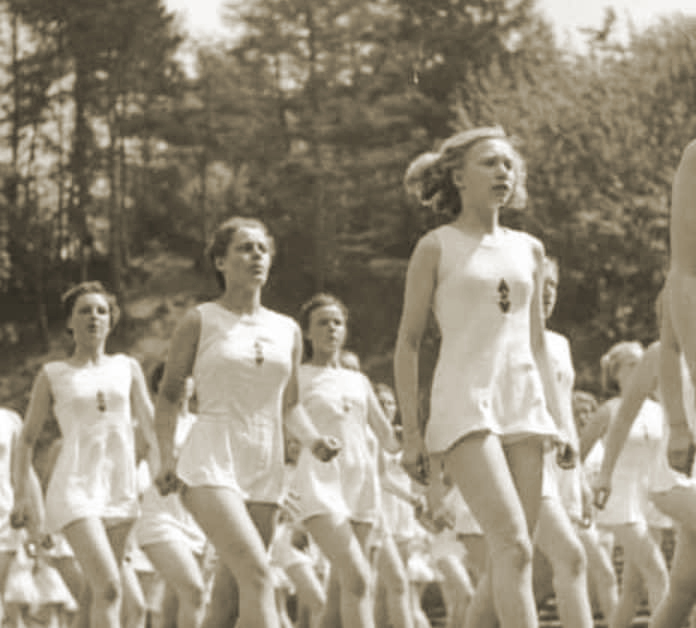 Stories of sex in Hitler’s Youth that were already circulating revived. There was also a rumour that the Lebensborn Organization favoured sexual encounters between honourable women and members of the SS, causing a scandal among a people who still didn’t fully understand the laws of sexual selection and eugenics.
Stories of sex in Hitler’s Youth that were already circulating revived. There was also a rumour that the Lebensborn Organization favoured sexual encounters between honourable women and members of the SS, causing a scandal among a people who still didn’t fully understand the laws of sexual selection and eugenics.
